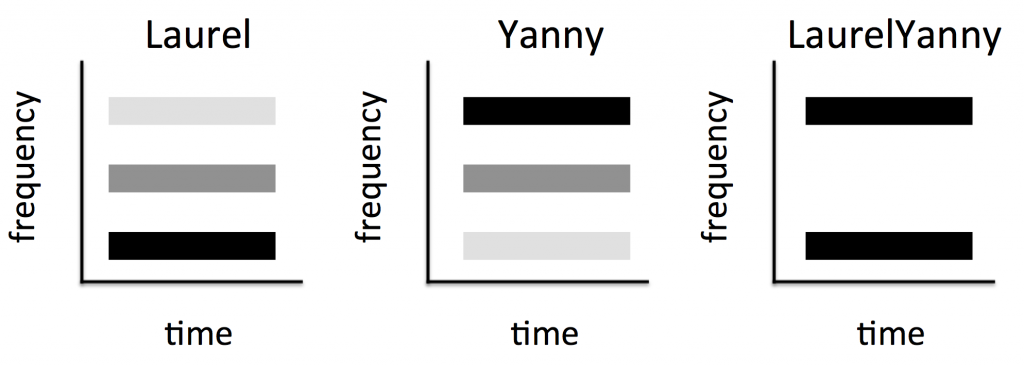At this point, we’re all *well* beyond peak #Yannygate. There have been comprehensive takes, there have been fun ones and there have been somber and downright ominous ones. But there have not been short ones that account for what we know.
This is the one (minute read). Briefly, all vowels that you’ve ever heard have 3 “formant frequencies” – 3 bands of highest loudness in the low (F1: ~500 Hz), middle (F2: ~1500 Hz) and high (F3: ~2500 Hz) frequency range. These bands are usually clearly visible in any given “spectrogram” (think “ghosts”) of speech.
However, the LaurelYanny sound doesn’t have this signature characteristic of speech. The F2 is missing. But your brain has no (epistemic) modesty. Instead of saying: “I have literally never heard anything like this before, is this even speech?”, it says: “I know exactly what this is” and makes this available to your consciousness as what you hear, without telling you that this is a guess (might be worth mentioning that, no)?

Stylized version of the Laurel and Yanny situation: Diagram of spectrograms. “Laurel” has all 3 formants, but with most power in the low frequencies. “Yanny” has all 3 formants, but with most power in the high frequencies. “LaurelYanny” has both high and low power, but nothing in the middle. So you have to guess.
That’s pretty much it. The signal contains parts of both “Laurel” and “Yanny”, but also misses parts of both, hence the need to guess. WHAT you are guessing and why you hear “Laurel”, “Yanny” or sometimes one, then the other, and what it means for you whether you are a “Laurel” or a “Yanny” is pretty much still open to research.
Action potential: Hopefully, that was a mercifully short read. If you have some more time – specifically another 7-9 minutes – and want to help, click here.
